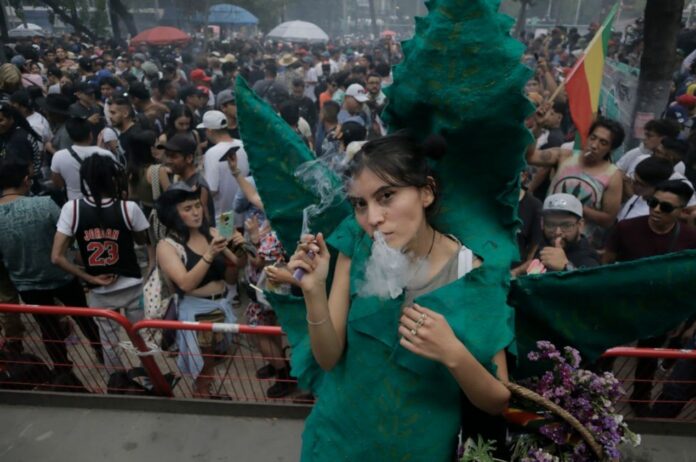A new study found 338,727 cases of intentional misuse and abuse among children aged 6 to 18.
While alcohol addiction has been steadily falling in the U. S., teen use of cannabis has surged by 245% since 2000.
That’s what researchers found when they looked at data from the National Poison Data System (NPDS) on cases of intentional misuse and abuse.
The findings, which were published today in the peer-reviewed journal Clinical Toxicology, show that American children ages 6 to 18 used or abused drugs on purpose more than 338,000 times.
More than 80% of all reported exposure instances included teens and young adults between the ages of 13 and 18. The vast majority of ingestions involved males (58.3%).
Over 32% of the cases had clinical outcomes that were “worse than minor”.
The latest research reveals a shift in trends over time. For example, dextromethorphan was the most-reported drug during the study period. However, the number of reports of this drug peaked in 2006 and has been going down since then.
Furthermore, in 2000 ethanol exposure accounted for the biggest number of misuse cases, but this trend has since reversed.
On the other hand, marijuana exposure cases didn’t change much from 2000 to 2009. From 2011 on, they went up steadily, and from 2017 to 2020, they went up even more quickly.
Experts who look at the data say that the rise in marijuana use is because edible cannabis products are becoming more popular and are now widely available across the country.
“Ethanol abuse cases,” according to author Dr. Adrienne Hughes, “exceeded the number of marijuana cases every year from 2000 until 2013.”
This pattern, however, began to change in 2014.
“Since 2014, marijuana exposure cases,” adds the author, “have exceeded ethanol cases every year, and by a greater amount each year than the prior.”
Although the misuse of marijuana in all forms was on the rise, the consumption of marijuana in edible form exhibited the largest average monthly increase compared to all other forms. This finding suggests that young people are shifting away from smoking marijuana and toward other forms of consumption. A growing number of people were using marijuana extracts, such as those found in cannabis vaping devices.
“These edible and vaping products are often marketed in ways that are attractive to young people, and they are considered more discrete and convenient,” adds Hughes.
However, research contradicts the common belief that they pose less risk.
“Compared to smoking cannabis, which typically results in an immediate high, intoxication from edible forms of marijuana usually takes several hours, which may lead some individuals to consume greater amounts and experience unexpected and unpredictable highs,” adds Hughes.
Since 2017, kid cannabis use has skyrocketed with US decriminalization. 19 states allow recreational cannabis use and 36 allow medicinal use as of 2022.
Despite the fact that cannabis is only legal for adults and not minors, the authors of the research claim that this has not stopped cannabis from being more widely available to children and teenagers or from contributing to their belief that it is safe.
“Our study describes an upward trend in marijuana abuse exposures among youth, especially those involving edible products,” says Huges, adding, “these findings highlight an ongoing concern about the impact of rapidly evolving cannabis legalization on this vulnerable population.”
The survey also found that a significant proportion of adolescents abused nonprescription drugs in addition to marijuana. Between 2001 and 2016, Dextromethorphan, an over-the-counter cold and cough medicine, was linked to the most drug abuse cases. In this study, oral antihistamines were also one of the most commonly abused drugs.
Drug-related deaths were rare, occurring in 450 young individuals (0.1% of cases). Most of the people who died were men, and they were 16 to 18 years old. They were also more likely to occur after opioid abuse.
And although there were 57,488 incidences involving children aged 6 to 12, these cases often did not include ‘traditional’ drugs, but rather vitamins, plants, melatonin, hand sanitizer, and other things.
The study was confined to instances of exposure that were characterized as abuse or misuse. “It is possible that additional misuse or abuse cases were classified otherwise and thus were missed,” the authors write.
Image Credit: Gerardo Vieyra/NurPhoto via Getty Images
